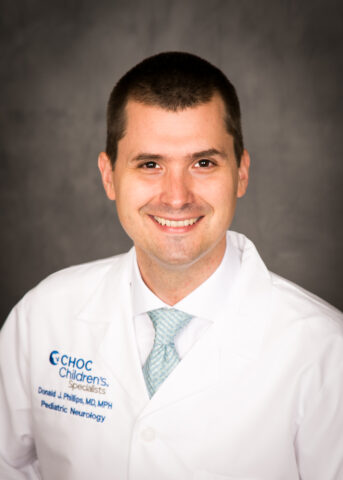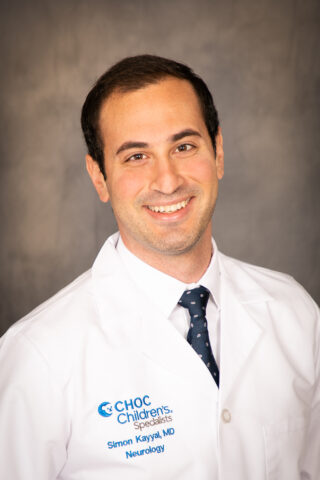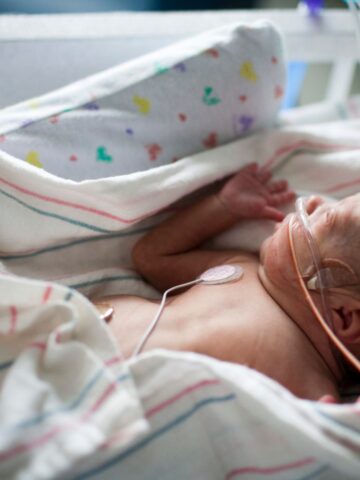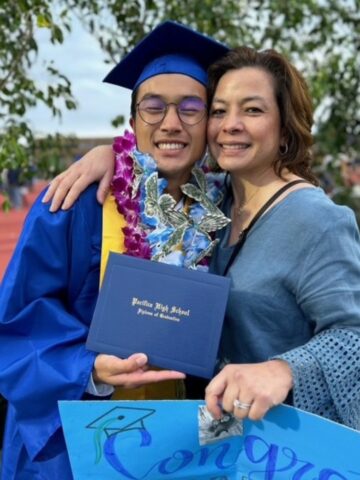CHOC studies use of Lacosamide for neonatal seizures treatment
Historically, treatments for neonatal seizures have involved phenobarbital, a drug with side effects including sedation and respiratory depression. Neurologists at Children’s Hospital of Orange County (CHOC) have chosen to participate in the LENS study, which examines the effectiveness, safety and pharmacokinetics of Lacosamide, a sodium channel blocker, as a second-line treatment for neonatal seizures.
CHOC neurologists are also investigating the complicated question of which newborns are at higher risk for developing epilepsy after hospital discharge. Answers to that question can help physicians work with families and pediatricians to develop ongoing care plans based on the epilepsy risk profile of each neonate.

“The reason we focus on research is simply that the field is not far enough along,” says Dr. Donald Phillips, medical director of CHOC’s Level 4 Comprehensive Epilepsy Center and Neurodiagnostic Laboratories. In both types of studies, the goal is to move the field forward — to increase understanding of neonatal seizures with the aim of developing treatment guidelines and making sure infants receive the appropriate type and level of intervention.
Driving seizure medication research forward
The neurology team at CHOC continually seeks new ways to treat newborns who experience seizures, with the goal of reducing seizures while minimizing treatment side effects.
“Randomized controlled trials can help clinicians determine which treatments are most efficacious. Unfortunately, there are not many of these trials on neonatal seizure treatment,” says Dr. Simon Kayyal, pediatric neurologist at CHOC. “When we heard about the LENS study, we wanted to become a participating site.”

The LENS study is a multi-site clinical trial taking place throughout 14 states, as well as Canada and Australia. The study is testing the efficacy, safety and pharmacokinetics of Lacosamide as a second-line treatment of seizures in children less than one month of age. Dr. Kayyal serves as the principal investigator of the LENS study.
“The options for neonatal seizure treatment are limited.” Dr. Kayyal says. “It’s important we answer the question of Lacosamide effectiveness especially since Lacosamide is not associated with the respiratory depression that is seen with phenobarbital.” Cardiovascular monitoring and lab assessments are performed to ensure lacosamide’s safety during the clinical trial.
To be eligible for the trial, participants must meet strict criteria, including having already received first-line treatment and having a specific cumulative duration or number of seizures. To date, one patient has been enrolled in the trial at CHOC.
Predicting pediatric epilepsy after hospital discharge
In addition to the LENS trial, the team at CHOC is involved in studies focusing on identifying which neonates who experience seizures are most at risk for developing epilepsy.
“Despite our current best efforts, one-third of all patients with epilepsy will be medically refractory,” Dr. Phillips says. “However, a lot of the seizures we see in neonates are acute symptomatic seizures. It doesn’t necessarily mean they will go on to have epilepsy. A big question is whether we can determine patients who will have epilepsy versus those who will not.”
Dr. Kayyal is conducting a study aimed at helping to determine variables that can help predict which neonates with a history of neonatal seizures will go on to develop epilepsy. One of the aims of the study, entitled “Measuring the incidence of epilepsy in neonates with acute symptomatic seizures who received early discontinuation of anti-seizure medications,” is to assess variables such as EEG data and MRI findings to see if any specific findings predict the development of epilepsy later in life in patients with a history of neonatal seizures.
“We will look for differences between those newborns who went on to develop epilepsy and those who did not,” Dr. Kayyal says.
EEG for seizure identification and other research
CHOC is also participating in research that examines using high-frequency EEG recordings to study neonatal brain waves. Part of a larger trial, the study has a goal of understanding how the brain is networked and where seizures originate, potentially indicating biomarkers for emerging epilepsy in neonates.
“One of the biggest advances in neonatal seizures has been early recognition and complete treatment of seizures,” Dr. Phillips says. “When we’re clinically observing neonatal patients, our sensitivity and our specificity aren’t high, and so we use EEG to determine whether a baby’s having a seizure. Not all centers have access to continuous video EEG that’s monitored 24/7, but CHOC has done this for a long time.”
Additionally, Dr. Phillips serves as principal investigator on nearly a dozen interventional trials. Most are studying potential drug or device candidates for use in rare and/or medically refractory epilepsy syndromes, including Dravet syndrome, tuberous sclerosis complex, developmental and epileptic encephalopathies (DEEs) and intractable focal epilepsy. He also has an internal grant to study the underlying genetics of seizure onset zones, looking at gene profiles of surgically resected brain tissue.
A tradition of advancing pediatric epilepsy care
The team at the CHOC Neuroscience Institute aims to build on its history of neonatal and pediatric seizure research and to help advance patient care worldwide. The CHOC Epilepsy Center is committed to setting new standards and driving the field forward.
“We strive to provide optimal care in the management of neonatal seizures,” Dr. Kayyal says. “In doing so we help to improve neurodevelopmental outcomes.”
Learn more about epilepsy care at CHOC




